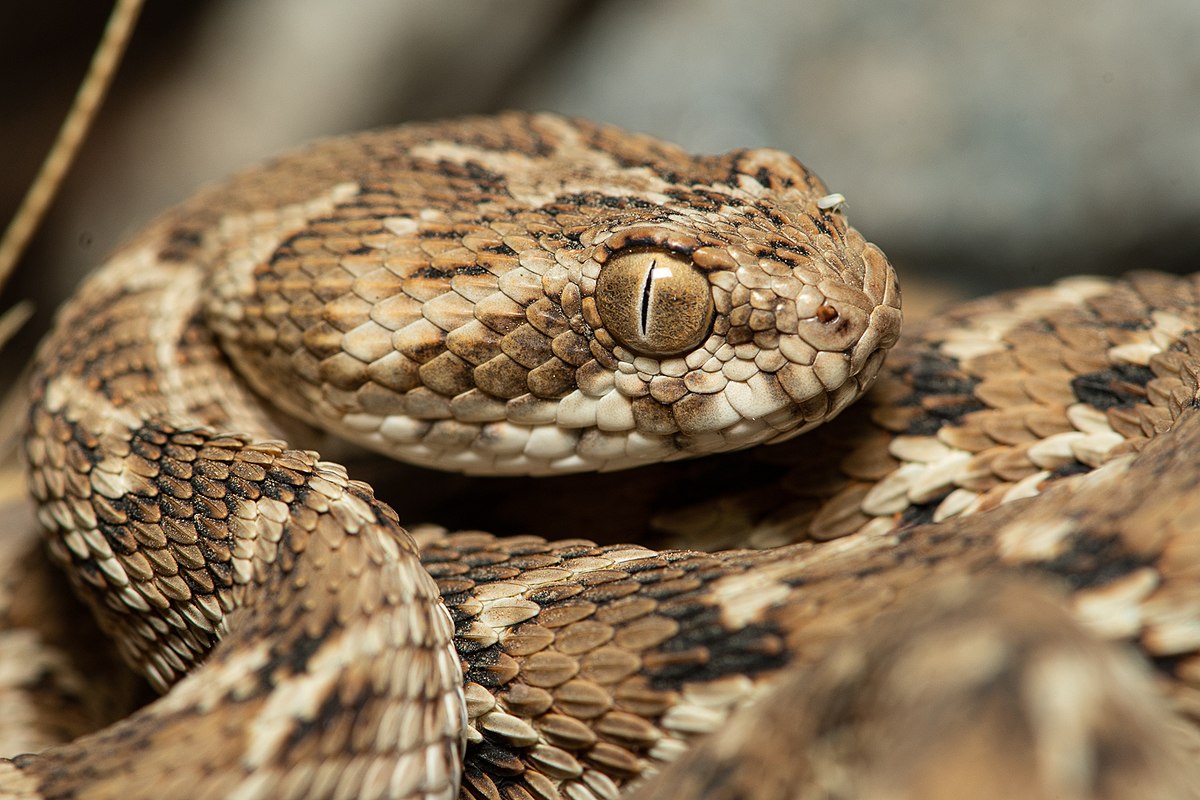
The Sindh Saw-scaled Viper, scientifically known as Echis carinatus sochureki, is a remarkable serpent species that is native to the arid regions of Pakistan, specifically in the province of Sindh. These venomous vipers are notorious for their deadly bites and their unique ability to produce a loud, saw-like sound by rubbing their scales together. But there is much more to these fascinating creatures than meets the eye.
In this article, we will delve into the world of the Sindh Saw-scaled Viper and uncover some of the most intriguing facts about this species. From their venomous nature to their remarkable adaptations, we will explore the biology, behavior, and significance of these serpents in their natural habitat. So, buckle up and get ready to dive headfirst into the captivating world of the Sindh Saw-scaled Viper.
Key Takeaways:
- The Sindh Saw-scaled Viper is a venomous snake with dangerous venom, unique scales, and nocturnal habits. Its distinctive defensive behavior and camouflaged appearance make it a fascinating yet threatened species.
- Conservation efforts are crucial to protect the Sindh Saw-scaled Viper, which faces significant threats due to habitat loss and persecution. Its wide distribution and unique features make it an intriguing but endangered creature.
Dangerous Venom
The Sindh Saw-scaled Viper, also known as Echis carinatus sochureki, is a venomous snake found primarily in the Sindh region of Pakistan. Its venom is highly toxic and can cause severe health issues or even death if not treated promptly.
Unique Scales
One of the most distinctive features of the Sindh Saw-scaled Viper is its keeled scales. These scales have a rough texture, which helps the snake maintain traction while moving on various surfaces, including sand and rocks.
Nocturnal Creature
The Sindh Saw-scaled Viper is primarily nocturnal, being most active during the night. This allows it to avoid high daytime temperatures and increases its chances of finding prey, such as small rodents and lizards.
Venomous Bite
The viper’s venom is both hemotoxic and coagulopathic, meaning it affects blood clotting and damages tissues and organs. Its venom has the potential to cause hemorrhaging, kidney failure, and other serious complications if not treated promptly with appropriate antivenom.
Unique Defensive Behavior
When threatened, the Sindh Saw-scaled Viper exhibits a unique defensive behavior known as “saw-scaled” display. It rubs sections of its body together, resulting in a distinctive sizzling sound. The sound is created by the friction between the keeled scales on its belly, acting as a warning to potential predators.
Camouflaged Appearance
To blend in with its natural surroundings, the Sindh Saw-scaled Viper has a well-developed camouflage. Its body coloration typically ranges from shades of gray, brown, or olive, allowing it to remain hidden in its arid habitat.
Wide Distribution
While primarily found in the Sindh province of Pakistan, the Sindh Saw-scaled Viper has a relatively extensive range. It can also be found in neighboring regions, including parts of India, Iran, and Afghanistan, adapting to various arid environments.
Threatened Species
Due to habitat loss, snakebite incidents, and persecution, the Sindh Saw-scaled Viper populations are facing significant threats. Conservation efforts are crucial to protect this species and mitigate the risks associated with its venomous nature.
Conclusion
In conclusion, the Sindh Saw-scaled Viper is a truly fascinating creature. It not only possesses unique physical features and venomous capabilities, but also has a rich history and significance in its native habitat. This viper serves as a reminder of the incredible diversity of animals that exist in our world. By learning more about these incredible creatures, we can gain a deeper appreciation for the complexity and beauty of the animal kingdom.
FAQs
Q: What is the size of a Sindh Saw-scaled Viper?
A: Sindh Saw-scaled Vipers are relatively small, with an average length of around 20 to 30 inches.
Q: Are Sindh Saw-scaled Vipers aggressive towards humans?
A: Sindh Saw-scaled Vipers are generally shy and prefer to avoid confrontation. However, if threatened, they can display aggressive behavior and will bite if provoked.
Q: Are Sindh Saw-scaled Vipers venomous?
A: Yes, Sindh Saw-scaled Vipers are highly venomous. Their venom can cause severe pain, swelling, and potentially life-threatening complications.
Q: How do Sindh Saw-scaled Vipers hunt for prey?
A: These vipers use their heat-sensing pits to detect warm-blooded prey. Once located, they strike with precision and inject venom into their prey to immobilize and eventually consume it.
Q: What is the natural habitat of Sindh Saw-scaled Vipers?
A: Sindh Saw-scaled Vipers can be found in arid and rocky regions of Pakistan, primarily in the province of Sindh.
Q: Are Sindh Saw-scaled Vipers endangered?
A: While there is limited data on their population status, habitat destruction and fragmentation pose threats to their survival. Therefore, conservation efforts are crucial to ensure their long-term existence.
Q: Are Sindh Saw-scaled Vipers commonly kept as pets?
A: Due to their venomous nature and specific environmental requirements, it is not recommended to keep Sindh Saw-scaled Vipers as pets. They are best appreciated in their natural habitat or under the care of professional herpetologists in specialized facilities.
Q: Are there any interesting behaviors unique to Sindh Saw-scaled Vipers?
A: Sindh Saw-scaled Vipers are known for their defensive behavior known as “sawing.” They rapidly rub their rough scales together, creating a distinctive, saw-like sound as a warning to potential threats.
Was this page helpful?
Our commitment to delivering trustworthy and engaging content is at the heart of what we do. Each fact on our site is contributed by real users like you, bringing a wealth of diverse insights and information. To ensure the highest standards of accuracy and reliability, our dedicated editors meticulously review each submission. This process guarantees that the facts we share are not only fascinating but also credible. Trust in our commitment to quality and authenticity as you explore and learn with us.
